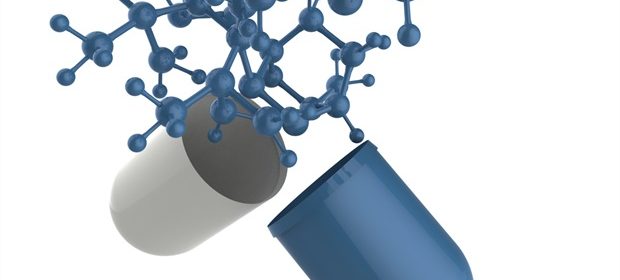Antibiotic-resistant, opportunistic pathogen enhances the pathogenesis of C. difficile

Clostridioides difficile, often referred to as C. difficile or C. diff, is a bacterium that causes severe intestinal illness and, as its name suggests, can be difficult to study and treat. Approximately 1 in 6 patients infected with C. difficile will be reinfected within two months. Yet scientists have not figured out why C. difficile infection is more difficult to treat in some patients versus others. The human gut is filled with trillions of microbes, and these microbes influence the virulence of various pathogens, but until now, scientists had little understanding of how C. difficile cooperates with the rich collection of microorganisms in the gastrointestinal tract.
In a new study in Nature, researchers at Children's Hospital of Philadelphia (CHOP) have found that Enterococcus – an antibiotic-resistant, opportunistic pathogen – works together with C. difficile, reshaping and enhancing the metabolic environment in the gut so that C. difficile can thrive.
When we talk about bacterial infections, we often just think of the pathogen itself, but the 'bystanders' in the gut can have a huge impact on the course of infection. This study reveals that the coincidence of two pathogenic organisms – Enterococcus and C. difficile – is more than a coincidence; they truly take advantage of each other. Understanding this relationship, as well as other factors that contribute to clinical outcomes of C. difficile infection, is essential for combating this urgent public health challenge."
Joseph P. Zackular, PhD, Senior Author, Investigator and Assistant Professor of Pathology and Laboratory Medicine at Children's Hospital of Philadelphia
Prior studies have shown that adults infected with C. difficile also have high levels of Enterococcus in their gut and that vancomycin-resistant Enterococcus (VRE) frequently co-infects patients with C. difficile. However, the effect of Enterococcus on susceptibility to C. difficile infection and clinical outcomes has not been established.
To further define the association between Enterococcus and C. difficile during infection, the researchers analyzed stool samples from 54 pediatric patients infected with C. difficile. Consistent with studies in adults, the researchers found the stool of these patients had high levels of Enterococcus, as well as a positive correlation between enterococcal and C. difficile burdens.
Having confirmation that enterococci are highly abundant in the gut of children with a C. difficile infection and that this positively correlates with C. difficile burden, the researchers then validated the mechanism of how these two pathogens work together. Using both in vitro and in vivo experimental models, they found that enterococci increase C. difficilevirulence by enhancing its production of toxins.
Then, using data ranging from transcriptomics to metabolomics – that is, the study of the RNA transcripts and metabolites related to these pathogens – the researchers found that enterococci reshape the gut environment, effectively remodeling the house the C. difficile pathogen walks into and making it more conducive for the pathogen to thrive. They found that enterococci use arginine, an amino acid, for energy and that in the process of doing so, the pathogen exports ornithine, another amino acid. Further analysis showed that enterococci modulate levels of arginine and ornithine in the gut during C. difficile infection and that arginine depletion plays a central role in C. difficile virulence.
Finally, the researchers explored whether their findings in the lab correlated with findings in human patients. Analyzing the microbiome of children with C. difficile infection and inflammatory bowel disease (IBD), they found that these children had high levels of fermentable amino acids, including ornithine. They also observed a positive correlation between C. difficile burdens and ornithine, supporting a key role for this amino acid in C. difficile infection.
"Collectively, these data suggest that enterococci and C. difficile interact during C. difficile infection through metabolic cross-talk to support increased colonization, pathogenesis and persistence in the gut," Dr. Zackular said. "Future research should explore targeting enterococcal metabolism – and the resulting amino acid landscape in the gut – as a way of altering the pathogenesis of C. difficile."
This work was done in collaboration with researchers at the University of Pennsylvania, University of Florida, Vanderbilt University School of Medicine, University of Virginia, University of Pittsburgh, and University of Minnesota Medical School.
Children's Hospital of Philadelphia
Smith, A.B., et al. (2022) Enterococci enhance Clostridioides difficile pathogenesis. Nature. doi.org/10.1038/s41586-022-05438-x.
Posted in: Medical Science News | Medical Research News | Disease/Infection News
Tags: Adolescents, Amino Acid, Antibiotic, Arginine, C. Diff, Children, Enterococcus, Gastrointestinal Tract, Healthcare, Hospital, in vitro, in vivo, Inflammatory Bowel Disease, Laboratory, Medical School, Medicine, Metabolism, Metabolites, Metabolomics, Microbiome, Ornithine, Pathogen, Pathology, Primary Care, Public Health, Research, RNA, Toxins, Transcriptomics
Source: Read Full Article